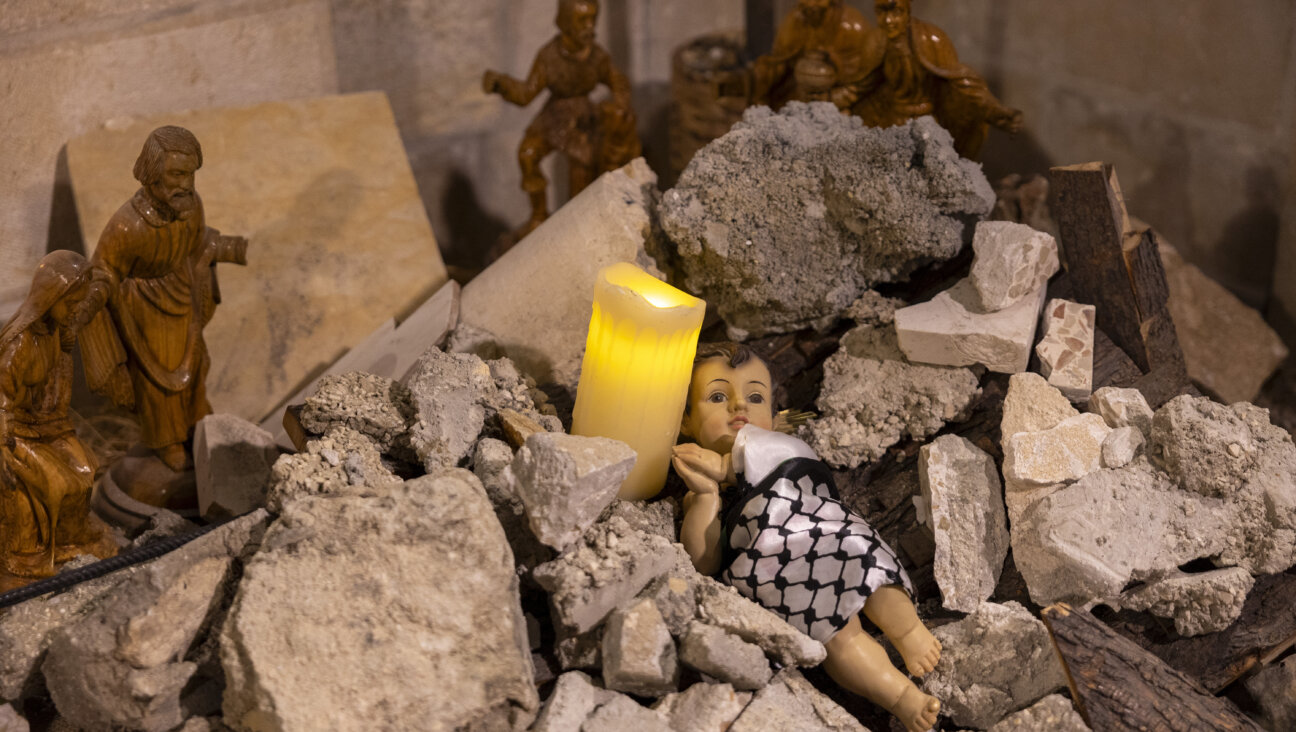139 Artworks Looted From Jews in Holocaust Found at Dutch Museums

Salome With Head of John the Baptist, Jan Adam Kruseman Image by rijksmuseum
Dozens of Dutch museums are in possession of at least 139 items with “problematic origins,” a special commission on stolen Holocaust-era art in the Netherlands has determined.
The list that the Committee for Museum Acquisitions from 1933 onwards published on Tuesday includes priceless items that are in the hands of 41 museums, including world-famous institutions like the Rijks Museum and the Stedelijk Museum, which have nine and 11 “problematic” items respectively.
Sixty-one items were flagged because “of the name of the owners and most of these 61 items belonged to Jews,” Rudi Ekkart, the researcher who led the committee’s work, told JTA.
Some of the items are works painted by well-known artists such as Isaac Israels and Adriaen Hanneman . “We have no estimate as to the market worth of the items on the list but it definitely includes very precious works by big names,” Siebe Weide of the Netherlands Museums Associations said.
The full findings were to be published on the Dutch-language website www.musealeverwervingen.nl Tuesday.
“The first step is to publish the results and ask anyone with additional information to help clarify the origins of the items,” Weide said at a news conference in Amsterdam. The website will be translated to English in the near future.
He added the study does not offer recommendations on possible restitution. “We advise claimants to contact museums and follow the procedure for restitution,” he said.
The list also includes 13 Judaica items with “problematic origins.” One such item, a 19th century mezuzah, is in the hands of the Museum Elisabeth Weeshuis in Culemborg near Utrecht. It was given for safekeeping during World War II to a museum that Weeshuis replaced by Louis de Beer, the caretaker of the Culemborg synagogue.
De Beer survived the war and lived in Culemborg until his death in the 1960s, but “it is not clear whether he was contacted about returning the items,” according to the Dutch-language website.
In total, 162 museums participated in the four-year study conducted by the committee with funding from the Ministry of Education, Culture and Science.
The current committee follows several major studies into stolen art in Holland, including a 1997 commission headed by Ekkart and a separate investigation into art acquired by museums from 1940-1948.
The new committee was set up because, “it emerged that museum also owned works that had come directly from Germany between 1933 and 1940,” where “Jews were already being persecuted. The property stolen from them could have found its way to Dutch museums,” a statement by the new committee read.
At the Rijks, the committee found that “Salome With The Head Of John The Baptist” by Jan Adam Kruseman, 1861, may have been confiscated from Jewish owners and auctioned off in 1943 in Amsterdam. The list includes one Stedelijk painting from 1921 by Henri Matisse.
A message from our Publisher & CEO Rachel Fishman Feddersen

I hope you appreciated this article. Before you go, I’d like to ask you to please support the Forward’s award-winning, nonprofit journalism during this critical time.
We’ve set a goal to raise $260,000 by December 31. That’s an ambitious goal, but one that will give us the resources we need to invest in the high quality news, opinion, analysis and cultural coverage that isn’t available anywhere else.
If you feel inspired to make an impact, now is the time to give something back. Join us as a member at your most generous level.
— Rachel Fishman Feddersen, Publisher and CEO























